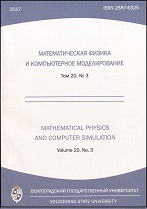|
This article is cited in 2 scientific papers (total in 2 papers)
Modeling, informatics and management
Oscillation and extinction scenarios in the new continuous model of the eruptive phase of alien species invasion
A. Yu. Perevaryukha
St. Petersburg Institute for Informatics and Automation of RAS
Abstract:
The paper considers the issue of modeling the development of those special population processes that include the passage of the eruptive phase of dynamics. Such brief hurricane regimes of change are often associated with the consequences of invasions of undesirable species. Processes in the introduction of a species can often develop through the delayed phase of a rapid increase in its abundance. The completion of the phase depends on many factors. Outbreaks of many species exert such a strong pressure on the environment that achieving a non-zero balance equilibrium is problematic. Such phenomena are interpreted by us as an extreme transition process to an uncertain state of the biotic environment before the beginning of the process. Depending on the counteraction, which is clearly seen in the examples of the dynamics of insect pests, simulated scenarios of similar phenomena can develop in various ways, including destruction of the habitat. The new model based on the equation with a deviating argument describes the variant of developing the repeated flash of catastrophic character. The scenario is implemented when non-harmonic cycle $N_*(r\tau,t)$ occurs, which can not be orbitally stable under the given conditions, but becomes transitive. The cycle ends with the trivial-zero value. The scenario of the most abrupt form of the eruptive phase that we simulate ends in a computational experiment by the death of the invasive population, but without forming an unbounded trajectory from the oscillations, as was the case with the destruction of the relaxation cycle of the extreme amplitude in the population flash equation in our previous work.
Keywords:
equations with delay, alien species, unstable population fluctuations, transitional regimes, modeling of biological invasive phenomena, eruptive phase of the outbreak.
Citation:
A. Yu. Perevaryukha, “Oscillation and extinction scenarios in the new continuous model of the eruptive phase of alien species invasion”, Mathematical Physics and Computer Simulation, 22:1 (2019), 54–70
Linking options:
https://www.mathnet.ru/eng/vvgum249 https://www.mathnet.ru/eng/vvgum/v22/i1/p54
|

|




 Contact us:
Contact us: Terms of Use
Terms of Use
 Registration to the website
Registration to the website Logotypes
Logotypes








 Citation in format
Citation in format 
